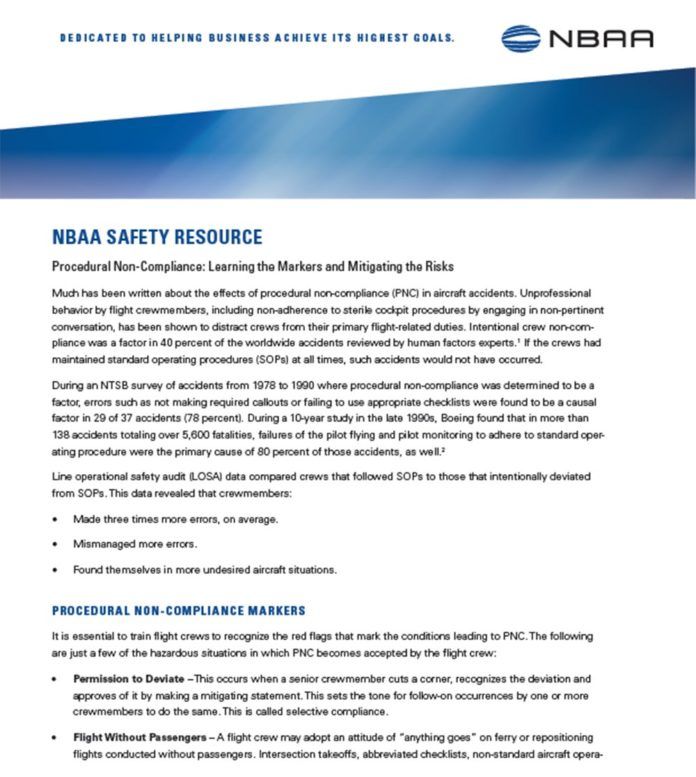To its credit, the business aviation community has risen to meet the challenge of procedural noncompliance. I serve on the National Business Aviation Association’s (NBAA) Safety Committee and for 2015, procedural non-compliance is one of the committee’s top safety priorities. I should point out that procedural noncompliance (PNC) is also on the NTSB’s 2015 Most Wanted List.
The NBAA Safety Committee developed resources to help address the procedural non-compliance issue. They can be found on NBAA’s web site.
The NBAA materials on PNC list several enabling markers that can lead crews to procedural noncompliance, which can be useful in determining when PNC may exist. The real root causes often boil down to a soft erosion of professionalism, which seemingly grants “permission” for crewmembers to ignore established procedures. The markers include:
Permission to Deviate
This occurs when a senior crewmember cuts a corner, recognizes the deviation and approves of it by making a mitigating statement. This sets the tone for follow-on occurrences by one or more crewmembers to do the same. This is called selective compliance.
Flight Without Passengers
A flight crew may adopt an attitude of “anything goes” on ferry or repositioning flights conducted without passengers. Intersection takeoffs, abbreviated checklists, non-standard aircraft operation, etc., may be confidentially allowed by complacent flight crews. This item has been recognized by the FAA in a safety alert for operators (SAFO 07006) that discusses repositioning flights and procedural non-compliance.
Environmental Pop-up Flights
Short release times or flights caused by ATC traffic and/or weather can cause the flight crew to cut corners to stay within the normal crew rest and/or duty time and to remain within FAA/company policies.
Dispatched Pop-up Flights
These flights, which are too tight for due process, can cause the flight crew to nearly or actually exceed their crew rest or duty time, scheduling requirements or operational policies. These pressures, which are caused by the operator’s dispatching, can cause the flight crew to cut corners to stay within the normal crew rest and/or duty time and to remain within FAA and/or company policies. Additionally, the crew may take on an attitude of reciprocal disregard toward authority and procedures when asked to operate outside of stated parameters.
Crew Physiology and Fatigue
When fatigued or impaired by physiological stress, PNC can develop rapidly. Poor crew communication, getting lost in checklists and failure to conduct thorough flight briefings are common indicators of fatigue.




